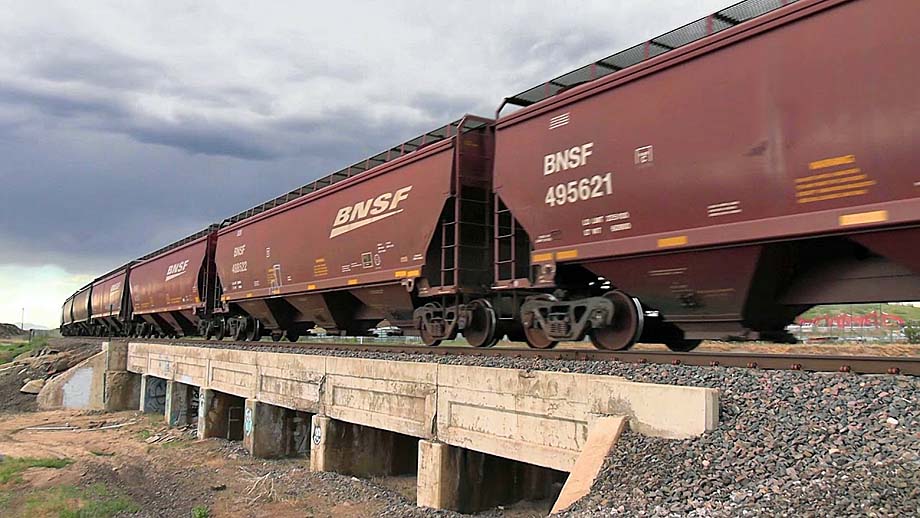
Ottawa Ontario - If interswitching were a hockey championship, the Canadian government these days
would be cheering for Team USA.
This is, unfortunately, what the federal government's proposal in Bill C-47 to extend the regulated interswitching
distance to 160 kilometres in the Prairie provinces amounts to.
Cheering for the other team and changing the rules to benefit the "away" side.
At that 160 kilometres U.S. railways can siphon Canadian traffic onto American routes without any corresponding ability
for Canadian Class 1 railways to do the same.
Regulated interswitching does not exist in American law.
This punishes our "home team" players, CN and CPKC, along with their 27,000 Canadian employees in two
important ways.
First, they will be forced to move traffic for movements up to 160 kilometres at a cost-based rate.
In other words, they don't make any money for this work.
Second, they will lose the business by moving traffic at cost to their direct competitors in the U.S. for the long-haul
portion of the trip and with the U.S. railways charging market rates.
Under the government's proposal, Canadian rail shippers, in this case mostly global grain companies, will be
financially incentivized to contract with an American railway instead of CPKC or CN.
This is because those shippers, if they use extended interswitching, will get a below market rate for the first 160
kilometres.
All a U.S. railway would need to do is get close to matching the Canadian market rate and they get the business, a job
made considerably easier by not having to carry the first 160 kilometres haul at regulated rates like Canadian railways
will.
The effect of this proposed Canadian law is to subsidize U.S. railways at the expense of Canadian ones fully aware of
that outcome.
As Daniel Dufort of the Montreal Economic Institute wrote in the Financial Post on 31 May 2023, "American railway
transport companies must be rubbing their hands with glee before this sad spectacle of
self-sabotage."
Given the Canadian government's focus on Canada-U.S. competitiveness in the wake of the American Inflation Reduction
Act, it is baffling to see such a decision included in the "Made-in-Canada" federal budget, especially in an
environment where we must ensure Canada stays competitive.
The impacts of commercial distortions caused by extended interswitching are not imaginary.
Perhaps this is what makes the whole thing so puzzling.
The regulated interswitching distance was extended to 160 kilometres from 30 kilometres back in 2014 following a much
larger than anticipated harvest and a harsh winter which challenged transportation.
It was then removed by the current government in 2017 due to, in part, the fact that thousands of carloads were moving
from Canadian supply chains to American ones.
A Canada Transportation Act review panel, led by the Hon. David Emerson, concluded in 2016 that extended interswitching
raised competitive concerns vis-a-vis U.S. railways, a conclusion echoed by Transport Canada in 2017 after analyzing
significant data provided by Canadian Class 1 railways.
The review panel also found that Canadian railways were receiving rates, set by the Canadian Transportation Agency,
that were non-compensatory.
This situation is (and was) untenable because railways are market participants.
They pay their suppliers and employees at market rates and likewise should be entitled to collect market rates for
their service.
Railways cannot invest in their infrastructure if the law prevents them from generating revenues.
Each carload lost to an American carrier means less revenue to invest in capacity-expanding infrastructure in
Canada.
That hurts every Canadian.
It also means less work for Canadian rail workers.
That is why unions like the Teamsters are rightly concerned by this pro-Team USA policy.
Canada's ports must also be concerned, because more Canadian traffic moving south under extended interswitching means
more goods in Portland or Seattle and less in Vancouver or Prince Rupert.
It is disappointing to see certain groups frame this debate around "integrating" the North American
market.
Canadian railways welcome intense competition, but on a level playing field.
This policy is not "integration".
The lack of reciprocity creates an uneven playing field between carriers whereby U.S. railways are the clear winners
and Canadian railways (and supply chains) are the clear losers.
In addition to limiting work available to Canadian union workers, this could decrease fuel revenues earned by provinces
and lead to other deleterious consequences in the form of chokepoints at interchanges and added greenhouse gas
emissions.
The shipper groups asking for this policy need to consider whether this is something they really want.
Is the cheaper-than-globally-low Canadian average rate for 160 kilometres worth hindering Canada's supply chains by
adding transit time, losing unionized Canadian jobs, reducing Canadian investment, and raising costs for all
shippers?
Extended interswitching is not a competitive tool.
It is a blunt regulatory instrument that distorts the market for the benefit of a few shippers and an American rail
giant.
The government must heed the calls of railways, unions, transportation experts, industry leaders, and others to protect
Canadian economic interests.
In a highly competitive global marketplace, we should be skating to where the puck is going, not scoring on "own
goals".
We need our political leaders to be cheering for Team Canada, not Team USA.
Marc Brazeau.
 Just like the old Crow Rate the farm lobby is using the federal
government to set rates and rules which only benefit themnselves at the expense of all other shippers.
Just like the old Crow Rate the farm lobby is using the federal
government to set rates and rules which only benefit themnselves at the expense of all other shippers.
(likely no image with original article)
(usually because it's been seen before)
provisions in Section 29 of the
Canadian Copyright Modernization Act.

